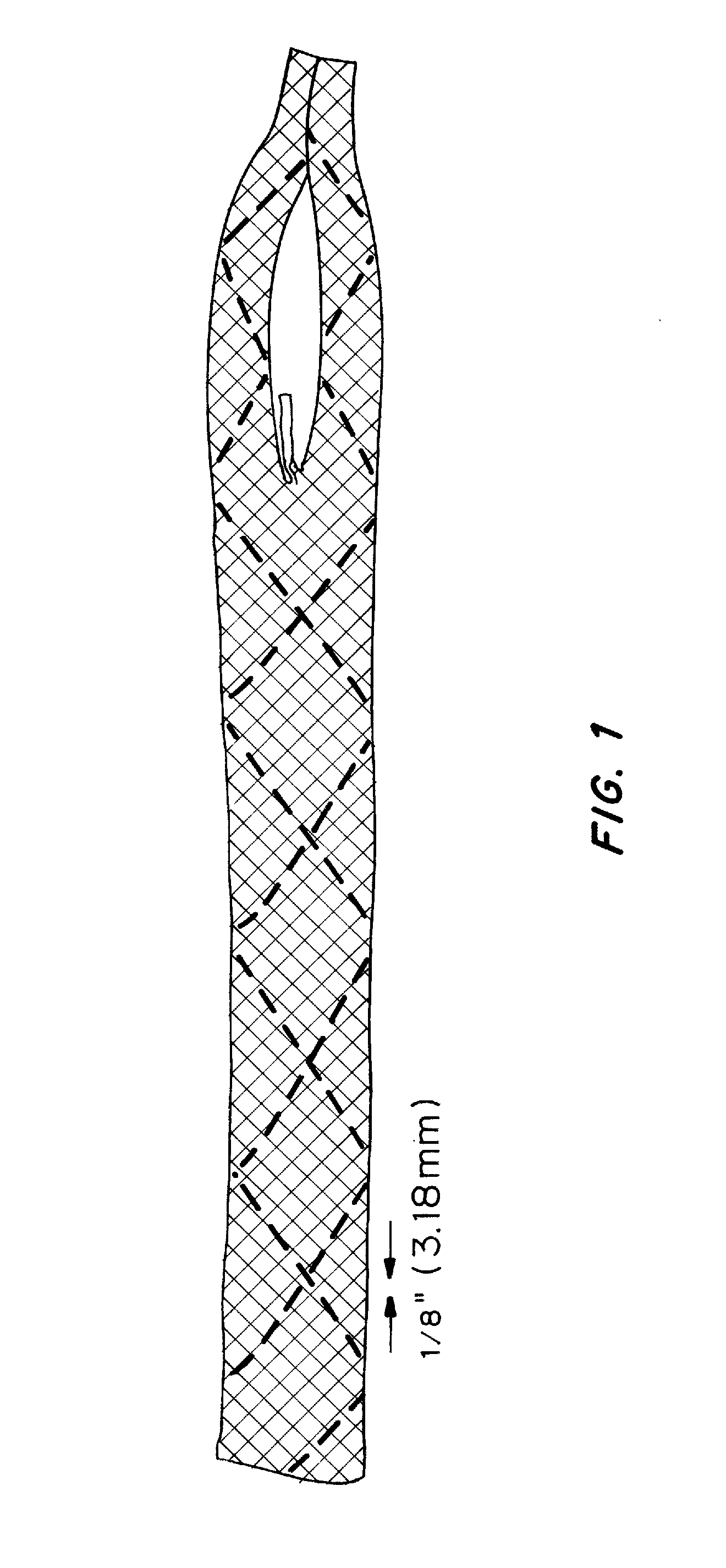Mechanically Competent Scaffold for Rotator Cuff and Tendon Augmentation
a mechanically competent and rotator cuff technology, applied in the field of implants of medical devices and prostheses, can solve the problems of significant shoulder pain and disability, high risk of rotator cuff problems, and the elderly population, and achieve the effect of strengthening strength and enhancing healing or augmentation
- Summary
- Abstract
- Description
- Claims
- Application Information
AI Technical Summary
Benefits of technology
Problems solved by technology
Method used
Image
Examples
Embodiment Construction
[0018]When developing an augmentation device, a bioresorbable device is highly preferred as it could prevent the need for a second surgery and at the same time significantly prevent long term biocompatibility issues found with permanent metallic, ceramic or polymeric implants.
[0019]The resorbable augmentation device needs to closely mimic the biomechanical properties of the tissue to be regenerated for a short span of time during the new tissue formation, until the regenerated tissue could satisfactorily perform the required functions. In addition to these requirements the resorbable augmentation device should present a favorable structure for cell infiltration and matrix deposition for neo-tissue formation. These facts points to the need for the development of a temporary augmentation device that closely mimics the structural features of the native tissue.
I. Tendon Rotator Cuff Augmentation Device
[0020]A polymeric fibrous structure that exhibits similar mechanical properties of hum...
PUM
 Login to View More
Login to View More Abstract
Description
Claims
Application Information
 Login to View More
Login to View More - R&D
- Intellectual Property
- Life Sciences
- Materials
- Tech Scout
- Unparalleled Data Quality
- Higher Quality Content
- 60% Fewer Hallucinations
Browse by: Latest US Patents, China's latest patents, Technical Efficacy Thesaurus, Application Domain, Technology Topic, Popular Technical Reports.
© 2025 PatSnap. All rights reserved.Legal|Privacy policy|Modern Slavery Act Transparency Statement|Sitemap|About US| Contact US: help@patsnap.com


